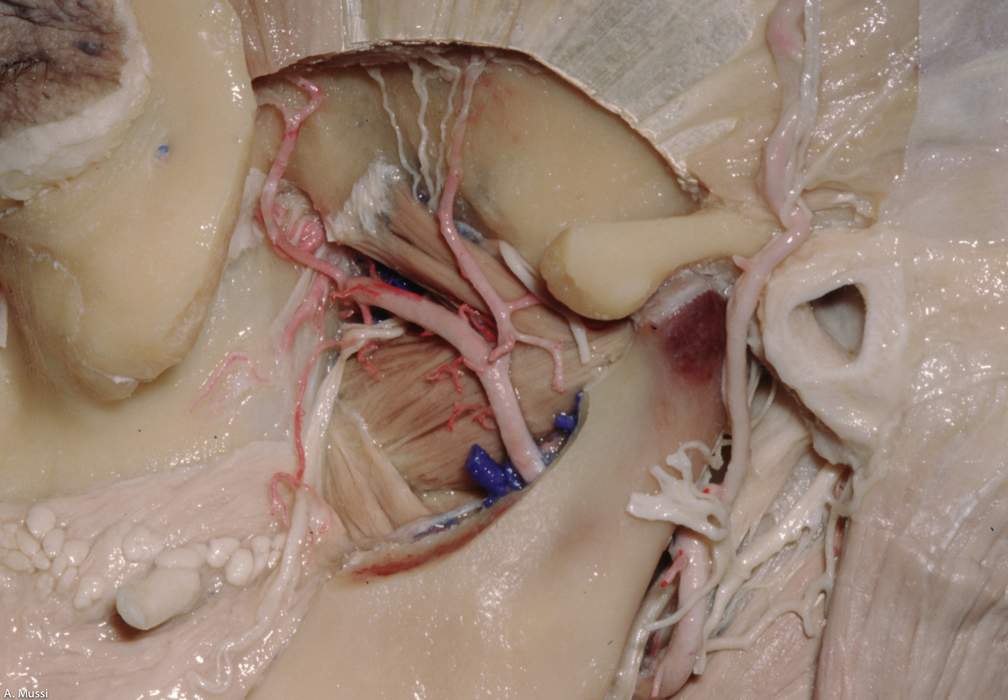Lateral View of Left Infratemporal Fossa and Pterygoid Muscles
6361

Surgical Correlation
Tags
Lateral view of left infratemporal fossa and pterygoid muscles. The zygomatic arch, coronoid process, and a portion of the anterior ramus of the mandible have been removed to expose the superficial aspect of the infratemporal fossa. Here, one can view the superior and inferior heads of the lateral pterygoid muscle, whose fibers run more horizontally to insert into the capsule of the temporomandibular joint and neck of the mandible. The superficial head of the medial pterygoid muscle, arising from the maxillary tuberosity, can also be seen (its deep head attaches to the medial surface of the lateral pterygoid plate). Coursing superficial to the lateral pterygoid is the maxillary artery. The deep temporal arteries are branches that ascend on the deep surface of the temporalis muscle in company with deep temporal nerves, branches of the mandibular nerve. These usually emerge above the superior head of the lateral pterygoid as does the masseteric nerve. The masseteric nerve passes over the mandibular notch to enter the deep surface of the masseter muscle (removed). The buccal nerve emerges between the two heads of the lateral pterygoid and courses onto the superficial surface of the buccinator muscle. It is sensory to the skin and mucous membrane of the cheek. The maxillary vein forms from consolidation of the pterygoid venous plexus and courses behind the neck of the mandible with the maxillary artery. The maxillary artery is the larger of its terminal branches. The superficial temporal artery, the other terminal branch, crosses the root of the zygomatic arch to the lateral scalp region in company with the auriculotemporal branch of the mandibular nerve. Emerging from behind the ramus of the mandible is the facial nerve, which courses through the parotid gland (removed). Posterior to the condyle of the mandible is the external auditory canal. (Image courtesy of AL Rhoton, Jr.)



